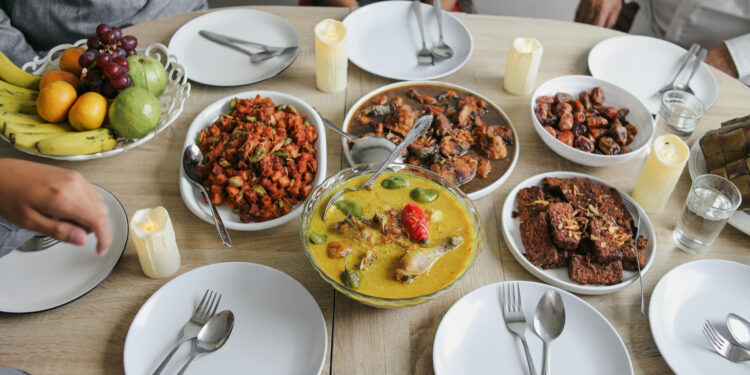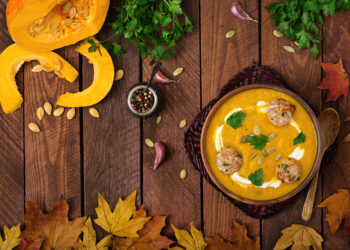Spices of the Islands aren’t just ingredients, they’re storytellers. They speak of migration, adaptation, and a whole lot of scotch bonnet. When it comes to Caribbean curries versus Indian curries, the difference isn’t just geography, it’s a flavour journey shaped by history, climate, and a little culinary rebellion.
While both traditions stem from a shared love for spice, the Caribbean has taken curry in its own bold, sun-drenched direction. So, what makes a Caribbean curry unmistakably Caribbean? Let’s simmer down and spice things up.
From the Subcontinent to the Sugarcane Fields
To truly grasp the soul of Caribbean curries, we need to trace the spice trail back to India. Between the 1830s and early 1900s, over half a million Indians were transported across the seas under the British indenture system to labour on Caribbean sugar plantations. They travelled with little more than cloth bundles and ancestral knowledge, and somewhere in there, curry came along for the ride.
But the Caribbean wasn’t exactly stocked with Kashmiri chillies or mustard seeds. So, these early cooks did what all great cooks do: they improvised. They swapped ingredients, adjusted techniques, and adapted recipes to the spices and produce of the islands. The result? A bold, flavour-packed style of curry that nods to its Indian roots but grooves entirely to the rhythm of the Caribbean.
The Flavour Foundations of Caribbean Curry
Let’s break down the key players that give Caribbean curries their swagger:
- Green Seasoning: The Caribbean’s Secret Sauce
Forget garam masala — green seasoning is the real magic. A vibrant blend of fresh herbs like thyme, parsley, spring onion, garlic, chadon beni (aka culantro), and sometimes ginger and lime juice, this paste is used to marinate everything from chicken to goat to shrimp. Think of it as the island version of a marinade-meets-herb-pesto. It infuses meat with flavour before a single grain of spice hits the pot. - Scotch Bonnet Peppers: Fiery and Fruity
No Caribbean curry is complete without at least a touch of heat from the iconic scotch bonnet. These tiny, colourful chillies pack serious heat, often hotter than most Indian chillies, but with a surprising fruity tang that elevates every dish. The trick? Use with care. A single pepper, seeds removed, can light up an entire curry. - Curry Powder: Store-Bought, Still Sacred
Unlike Indian cooks who often grind fresh masalas, Caribbean kitchens tend to lean on curry powders, often yellow, turmeric-forward blends from brands like Chief, Lalah’s or Turban. They’re quick, consistent, and pack a punch. The key is “burning” the powder in oil at the start of cooking — a tradition that unlocks its depth and avoids a raw, dusty taste. - Coconut Milk & Local Additions
In islands like Jamaica and St Lucia, coconut milk lends a creamy richness to curries — especially those made with fish or prawns. Hearty root vegetables such as cassava, yam, and sweet potato often find their way into the pot too, adding natural sweetness and body. The result? A bowl of pure comfort, infused with unmistakable Caribbean character. - Slow and Low Cooking
While Indian curries often build flavour in stages with various spice additions, Caribbean curries usually take a more hands-off approach once the base is built. After searing and seasoning, the pot is covered and left to bubble — low and slow, letting the meat absorb every aromatic note until tender.
Indian vs. Caribbean: Let’s Compare
To truly see what sets Caribbean curries apart, here’s a side-by-side flavour duel:
| Element | Indian Curry | Caribbean Curry |
| Spice Origin | Ground fresh from whole spices | Store-bought spice blends, often turmeric-heavy |
| Heat Source | Dried red chillies, green chilli | Scotch bonnet or habanero |
| Herb Base | Coriander, curry leaves, methi (fenugreek) | Green seasoning: thyme, chadon beni, spring onions |
| Fat Used | Ghee, mustard oil, vegetable oil | Vegetable oil or coconut oil |
| Liquid Base | Tomato, yoghurt, onion puree | Coconut milk, water, broth |
| Cooking Method | Layered spices, frying, tempering | Marination + “burned” curry powder, then simmer |
| Proteins | Chicken, lamb, paneer, pulses | Goat, duck, shrimp, beef, fish |
| Common Accompaniments | Rice, naan, chapati | Roti, rice and peas, dhal, cassava, and dumplings |
Recipe: Classic Trinidadian Curry Goat
You didn’t think we’d talk about Caribbean curry without sharing a recipe, did you? Here’s a classic to try at home:
Ingredients:
- 1.5kg goat (or lamb), bone-in, cut into chunks
- 4 tbsp green seasoning (homemade or store-bought)
- 2 tbsp Caribbean curry powder
- 2 tbsp vegetable oil
- 1 chopped onion
- 4 cloves garlic, minced
- 1 scotch bonnet, deseeded and chopped (or leave whole for less heat)
- 1 tsp ground jeera (cumin)
- Salt and black pepper to taste
- 400ml water
- 1 potato, diced (optional, for thickening)
Instructions:
- Marinate the goat in green seasoning overnight, or at least for a few hours.
- In a large pot, heat the oil, add curry powder and cumin — “burn” it for 30 seconds until aromatic.
- Add the meat, sear until browned on all sides.
- Add onion, garlic, and scotch bonnet. Cook for 5 minutes.
- Pour in water, bring to a simmer, cover and cook for 90–120 minutes, until the meat is tender.
- Add potatoes in the last 20 minutes if using. Season to taste.
- Serve hot with dhal puri, rice or roti, and a side of respect.
Spice Blend: DIY Caribbean Curry Powder
Ready to capture the essence of Caribbean curry in your own kitchen? Begin with a blend of:
- 4 tbsp ground turmeric
- 1 tbsp ground coriander
- 1 tbsp ground cumin
- 1 tsp ground fenugreek
- 1 tsp black pepper
- 1 tsp ground ginger
- 1 tsp paprika
- 1 tsp allspice
- ½ tsp ground cloves
Toast gently in a dry pan for 2–3 minutes, then store in an airtight jar.
Beyond the Kitchen: Curry as Culture
Caribbean curry is more than just a meal — it’s a reflection of community, celebration, and comfort. It’s Auntie cooking for everyone on the block. It’s the centrepiece of wedding-day feasts, with curry duck simmering in a heavy iron pot. It’s served at festivals, savoured after a night out, and cherished during quiet Sunday lunches.
While its Indian roots are deeply respected, Caribbean curry has evolved into something uniquely its own. A fusion, yes — but one that stands confidently and flavourfully on the world stage.
A Final Sprinkle!
The next time you find yourself at a Caribbean food stall or dining in a Trini family home, listen closely. You’ll hear stories of migration, resistance, and flavour swirling in the steam. From the boldness of the scotch bonnet to the brightness of green seasoning, Caribbean curry tells its tale — one pot, one plate, one pepper at a time.
Think curry, but with a kick — bold spices, scotch bonnet heat, and maybe just a hint of rum in the pot. It’s rich, fearless, and full of character. This isn’t mild-mannered comfort food; it’s curry that knows where it comes from and isn’t shy about it. That’s the flavour we live for, and at CurryBien, we’re here to ladle it up, celebrate it loud, and go back for seconds.
For more flavour-packed stories, recipes, and foodie finds, follow us currybien.co.uk/ and stay tuned for your next delicious adventure.




















